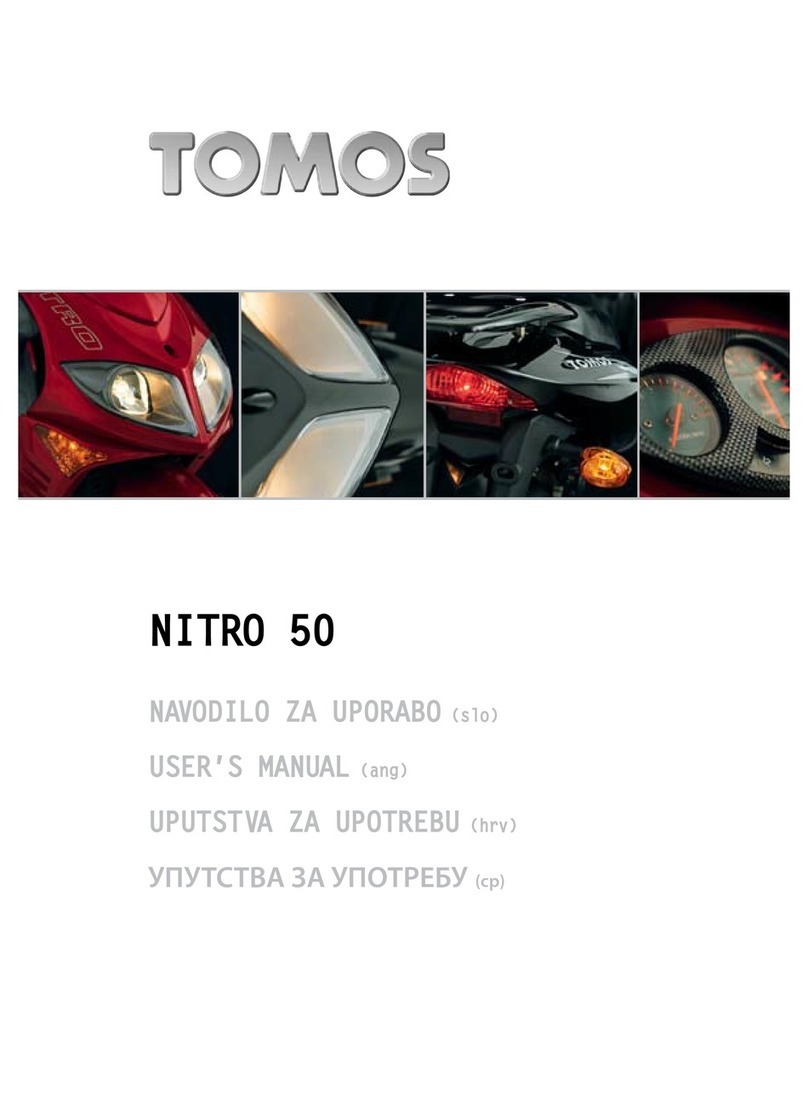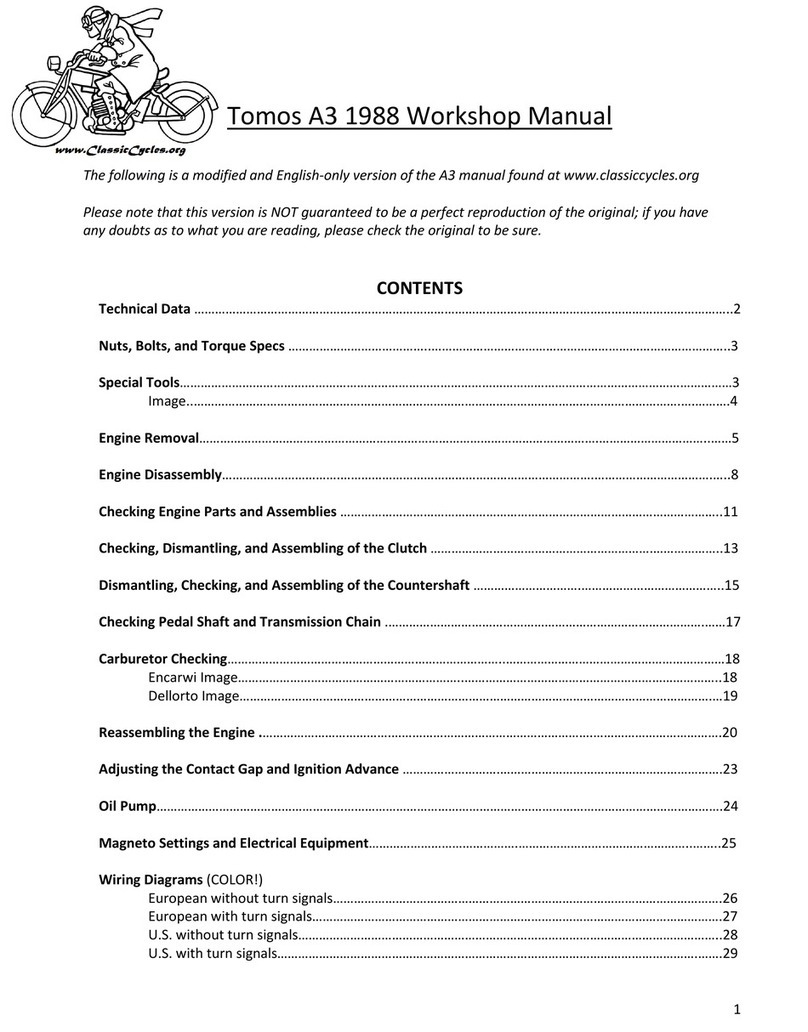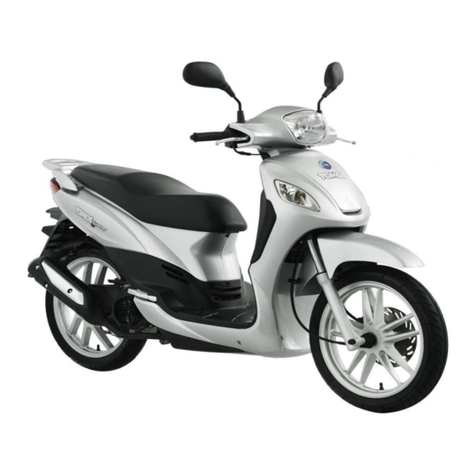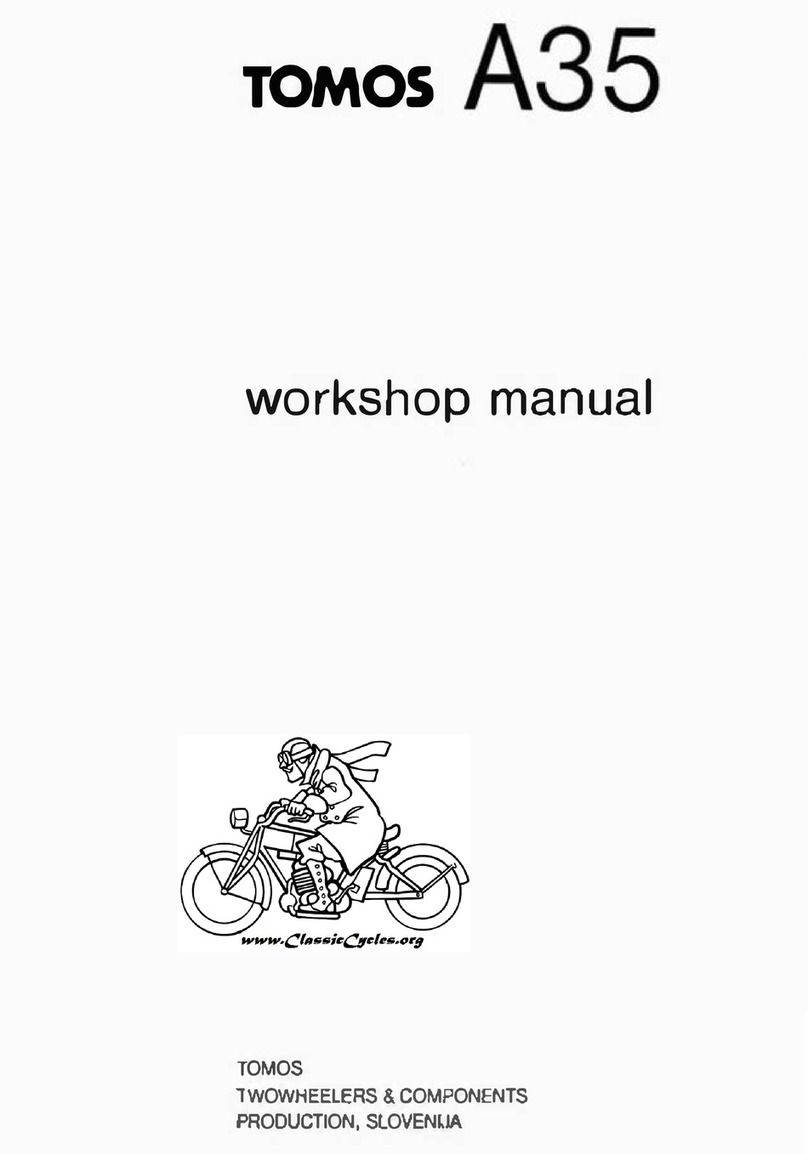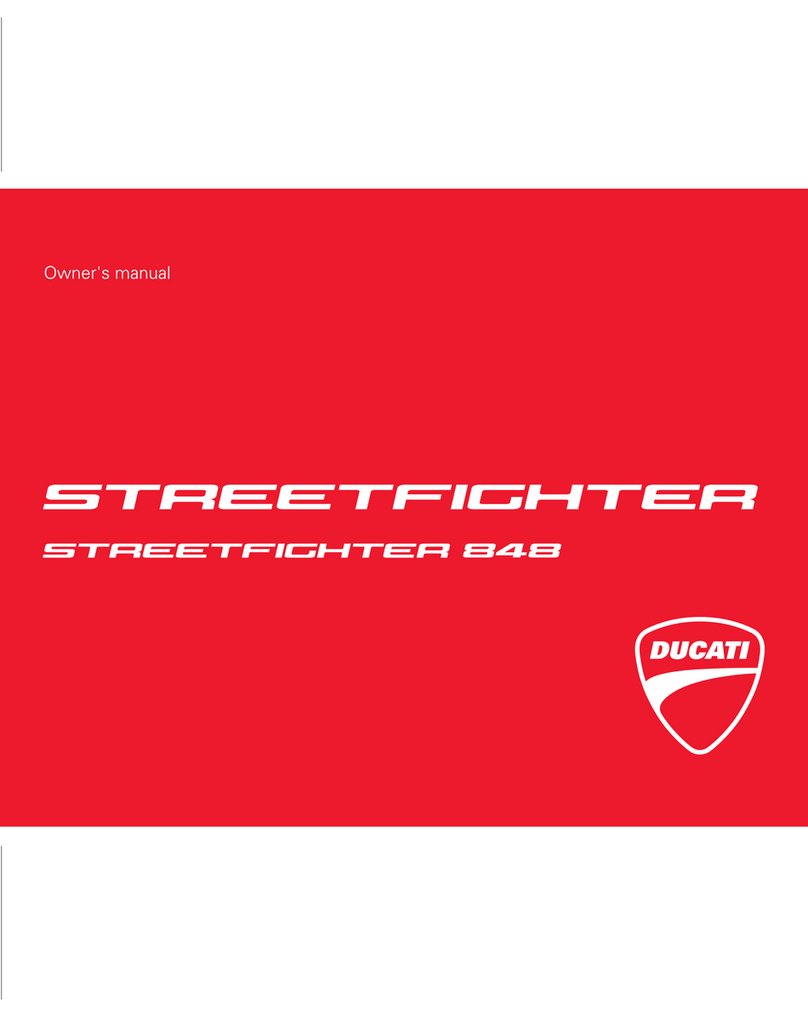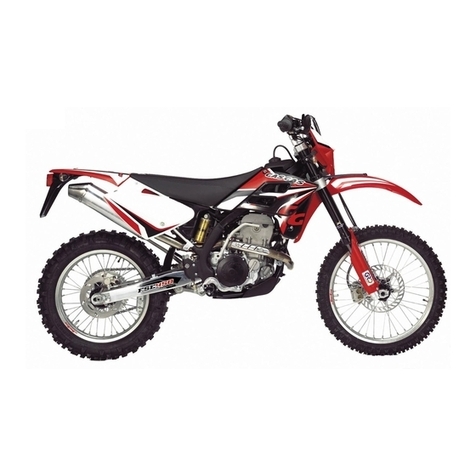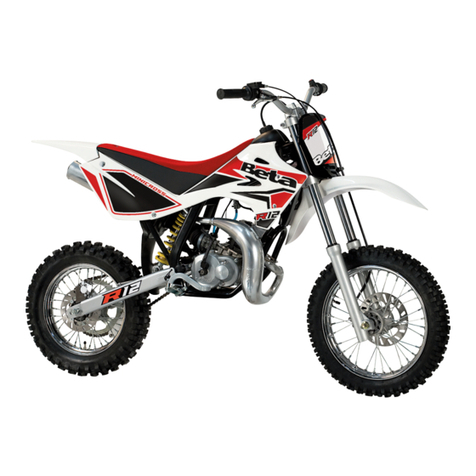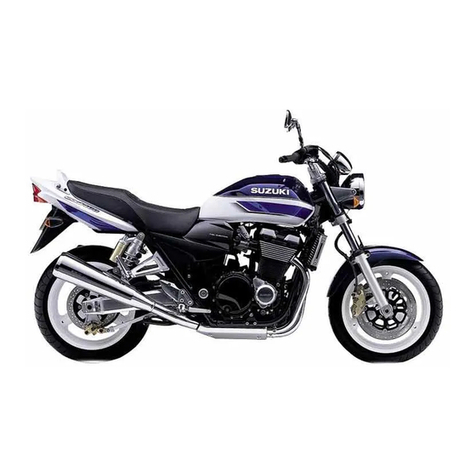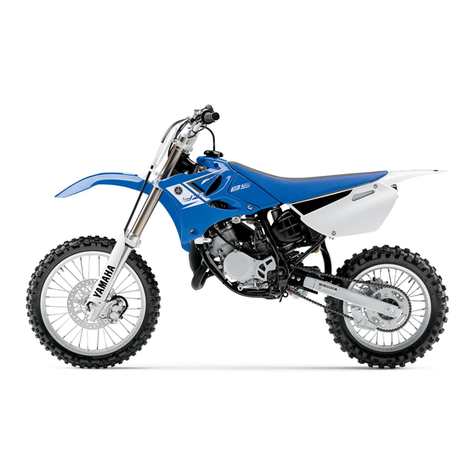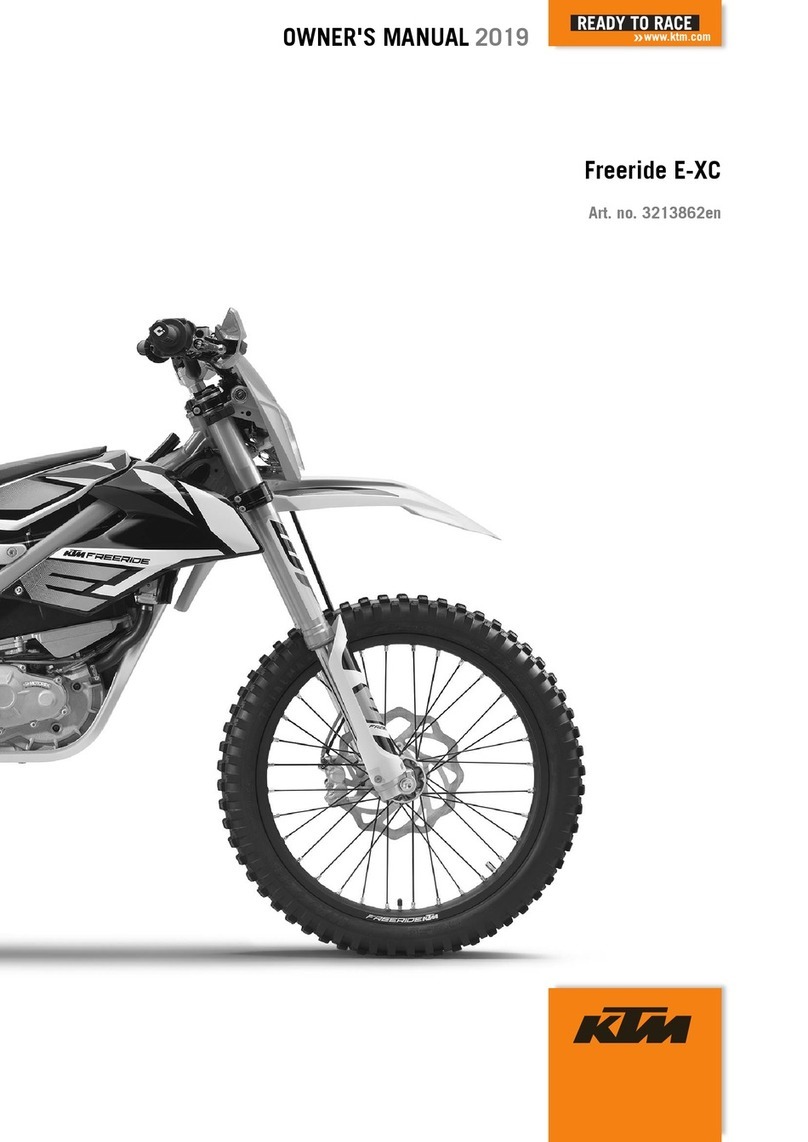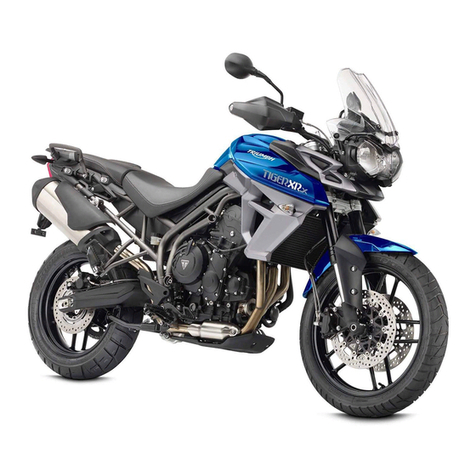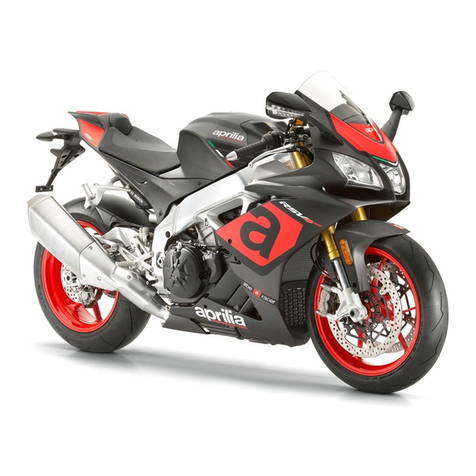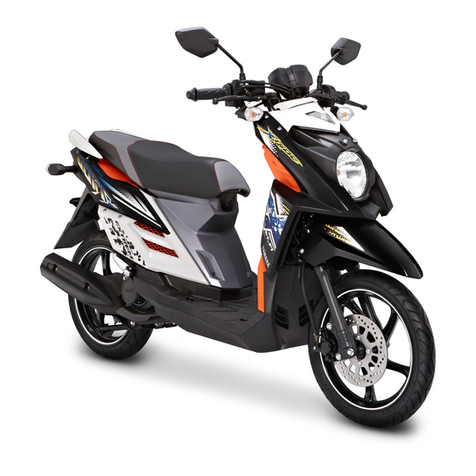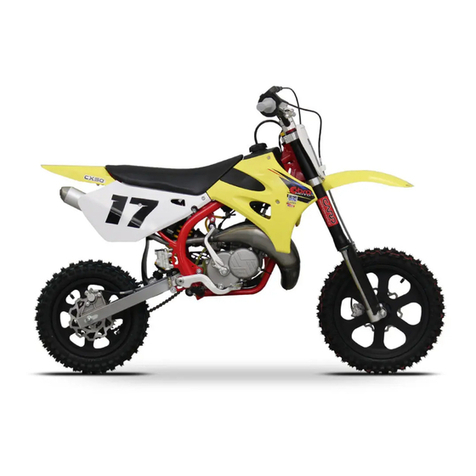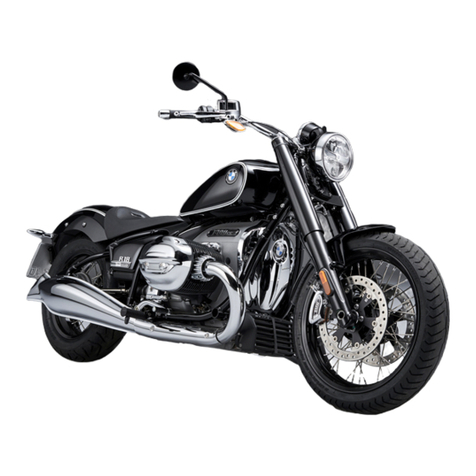Tomos Classic XL 45 User manual

CLASSIC

CLASSIC
WARRANTY TABLE
PHONE/E-MAIL
THE DEALER’S STAMP
AND SIGNITURE
OWNER’S NAME
ADDRESS
MODEL/TIP
VIN NO.
YEAR OF PRODUCTION
DATE OF DELIVERY
DEALER’S NAME
DEALER’S ADDRESS
All claims made within the warranty preiod should be submitted to an
authorised service workshop, along with the warranty itself.

DATE
SERVICE
DATE
SERVICE
DATE
SERVICE
DATE
SERVICE
DATE
SERVICE
KM
months
1.000
2
3.000
6
10.000
12
15.000
18
20.000
24
RECORD OF RECOMENDED SERVICE INSPECTIONS (The cost of service inspection wll be borne to custumer)

1
TOMOS
USER’S MANUAL
CLASSIC

2
CONTENTS
Warnings 3
Riding Safety Tips 3
Technical Specification 4-5
Technical Description 6-8
Vehicle operation 9
Fuel 9
Engine Starting 9
Riding 11
Engine Running-In 11
Maintenance 12
Maintenance Operations 12
Lubricants 12
Gearbox Oil change 12
Cleaning 13
Fuel System Cleaning 13
Exhaust System Cleaning 14
Vehicle Cleaning 15
Checks and Adjustments 15
Engine Oil Level Check 15
Bowden Adjustment 15
Transmission Chain Adjustment 16
Bolt and Nut Tightness 16
Maintenance Schedule 17
Troubleshooting 18
Fuel System Troubles 18
Ignition System Troubles 18
Troubles Causing Reduced Engine Power 18
Gearbox Troubles 19
Tomos warranty condidions 20

3
WARNINGS
Prior to operating the vehicle, carefully read this User’s Manual in order
to get acquainted with its operational characteristics and safe and
proper operation.
1.Fuel is extremely flammable and explosive; therefore it requires
special handling precautions:
- Stop the engine prior to refilling the tank;
- Fill the tank outdoors; never approach the tank with a lit cigarette,
open flame or sparks; and
- Thoroughly wipe off any spilled fuel
2. The engine should not be run in an enclosed space or nearby
entrances to lower-level areas (cellars etc.). Engine exhaust gases are
toxic and denser than normal atmospheric air.
3. When starting or running the engine, never touch the ignition coil,
high voltage cable, ignition spark plug cap or other parts of the
electrical system.
4. The vehicle is equipped with a catalysts exhaust system causing high
temperatures. When the engine is running and for some time after
it has stopped do not touch its hot parts: the cylinder, the cylinder
head, exhaust silencer. Do not touch the brake components too.
5. When the engine is running beware of the engine’s rotating parts.
No modification of the vehicle, stripping-off any parts or installing
non-original spare parts is permitted. The vehicle owner is specifically
warned that any modification to the exhaust system can only result in
the vehicle’s deteriorated operation, without any positive effects on
engine performance and causes higher air pollution.
RIDING SAFETY TIPS
Riding a twowheeler is simple, yet it requires some skills and experience
which can only be accumulated progressively. Prior to each ride,
observe the following rules:
1. Check the proper functioning of all vehicle assemblies.
2. When riding, wear light-colored, preferably light-reflective clothes;
ride with your lights on; avoid riding in other drivers “blind spots” to
prevent danger of other drivers “overlooking” you.
3. Abide by all traffic regulations; above all, adjust your riding speed to
the road conditions and your skill level.
4. Do not hand the vehicle over to any inexperience riders.
5. Prior to changing lanes, always check that this can be done safely,
and signal your intention in time Be careful when riding trough road
crossings or passing other vehicles (including parked vehicles)..
6. Always ride with your helmet on, be properly dressed and wear
boots.
7. Pay due the attention to what is going on in front of you and behind
you (rear mirror) and try to anticipate events
8. The braking affects the loading on each wheel: the front braking
increases; whereas braking with the rear brake only increases the
braking distance while also reducing vehicle stability; hence use the
rear brake with caution.

4
TECHNICAL SPECIFICATIONS
Model Classic
Variants A34B – 45km/h
A34C – 30km/h
A34D – 25km/h
A34E – 20km/h
Engine Type single-cylinder, two-stroke
air-cooled
Displacement 49 cm
3
Cylinder bore diameter 38 mm
Piston stroke 43 mm
VARIANT A34B:
Compression ratio 10 : 1
Engine power 1,7 kW at 4800 min-1
Torque 3,6 Nm at 3500 min-1
Maximum speed 45 km/h
Fuel consumption 1,8/100km
VARIANT A34C:
Compression ratio 6 : 1
Engine power 1,0 kW at 3500 min-1
Torque 3,1 Nm at 2500 min-1
Maximum speed 30 km/h
Fuel consumption 2,2/100km
VARIANT A34D:
Compression ratio 6 : 1
Engine power 1,0 kW at 3500 min-1
Torque 3,1 Nm at 2500 min-1
Maximum speed 25 km/h
Fuel consumption 2,5/100km
VARIANT A34E:
Compression ratio 6 : 1
Engine power 1,0 kW at 3500 min-1
Torque 3,1 Nm at 2500 min-1
Maximum speed 20 km/h
Fuel consumption 2,8/100km
Starter Kick-starter or pedals

5
Fuel Tank capacity 4 l (incl.0,5 l reserve)
Engine oil reservoir 1 l
Suspension Front forks travel 70 mm
Rear shock absorber travel 35 mm
Wheels Front tire dimensions 2 ¼ -16
Rear tire dimensions 2 ¼ -16
Front tire inflation pressure 2,2 bar
Rear tire inflation pressure 2,2 bar
Electrical Magneto 12V 80W
system Spark advance preset
Spark plug-A24B Bosna F75, BOSCH-W7AC
Spark plug-A24C, A24D,
A24E Bosna F75, Champion-L86
Spark plug electrode clear. 0,8 mm
Headlight 12V 25W
Tail light 12V 5W
Stop light 12V 15W
Speedometer illumination 12V 2W
Oil level signal light 12V 1,5W
Dimensions Wheelbase 1.080 mm
And weights
Total length of vehicle 1.640 mm
Vehicle mass (empty fuel tank) 60 +3 kg
Maximum permitted total weight 160 kg

6
TECHNICAL DESCRIPTION
1. Fuel tank cap
2. Fuel petcock
3. Carburetor, choke
4. Kick starter lever or pedals
5. Prop stand
6. Rear brake lever
7. Front brake lever Electric start pushbutton (version)
8. Throttle lever
9. Horn switch
9a. STOP switch
10. Tool bag
11. Speedometer
12. Oil level signal light
13. Chain tension adjuster
14. Air filter
15. Engine oil reservoir, cap
16. Luggage carrier
17. Oil pump
18. Steering lock

7
Fig. 1 Fig. 2
11
69 9a 87
12

8
Fig. 3
Fig. 4

9
VEHICLE OPERATION
Fuel
EUROSUPER 95 and two-stroke engine oil.
Your vehicle is equipped with an oil pump, which adds a specified
amount of oil to the petrol (approx. 2%). Pour two-stroke oil into the
separate oil reservoir (15, Fig. 1) - approximately 1 liter.
CAUTION!
See the Warning sticker for the max. oil level near to the oil reservoir.
Use only high quality fully synthetic two-stroke oil.
CAUTION!
Prior to starting the engine for the first time, fill the fuel tank (1, Fig. 1)
with approx. 1 liter mixture of two-stroke oil and gasoline in the ratio of
1:50 (2%), then start the engine and let it run for at least 8 minutes in
order to allow the oil pump to fill the suction pipe.
Before this take off the oil pump cover (17, Fig. 1) and unscrew the bolt
on oil pump (A, Fig. 3) and wait till oil comes from reservoir. Tighten the
bolt.
Engine starting
Open the fuel cock (Fig. 5). Note: A – fuel supply shot, B – fuel supply
on, C - reserve.
If the engine is cold, press the cold start lever (B, Fig. 6).
Kick start version:
With the throttle fully closed, press the rear brake lever and press the
kick-starter lever (4, Fig. 1) – without opening the throttle.
If starting the engine when it is still warm, the throttle must be fully
opened.
Pedal version:
With the throttle fully closed, press the rear brake lever and press the
pedals (4, Fig. 1) backwards – without opening the throttle.
If starting the engine when it is still warm, the throttle must be fully
opened.

10
When using the choke, allow the engine to run for 10 to 20 seconds
without opening the throttle. The choke start lever disengages
automatically when the throttle is opened.
In the case the engine is hot do not use the choke lever.
Fig. 5

11
Riding
The speed is controlled by the throttle lever (8, Fig. 2).
Engaging the first or second gear is done by opening or closing the
throttle. Avoid switching too frequently between first and second
gears. In such situation you should instead reduce the throttle opening
and keep the vehicle in first gear. When descending a slope, shortly
open the throttle from time to time in order to improve lubrication and
headlight operation. The vehicle is shut down by closing the throttle
lever and switching the STOP button to the position off (9a, Fig. 4). Then
close the fuel cock (position A, Fig. 5)!
If the vehicle is to stay out of operation for a longer period (e.g. during
winter), draining of the fuel from the carburetor cup in the following way
is recommended: close the fuel cock and, by opening the throttle lever,
let the engine run out automatically.
Engine Running-in
Do not run the engine at full throttle during the initial 100 km. Later
increase the engine loading progressively.
Fig. 5

12
MAINTENANCE
Maintenance Operations
The vehicle is easy to maintain, yet maintenance is imperative for
perfect performance. Particularly important operations include regular
lubrication of individual assemblies, gearbox oil changes, cleaning
of parts affecting engine operation (spark plug, exhaust system,
fuel system) and checking of safety-related riding components (tire
pressure, operation of lights and brakes, tightness of bolts and nuts).
The maintenance table defines maintenance works in certain intervals in
km and months - consider whichever comes first - for the period up to
20.000 km or 24 months.
Lubricants
For the gearbox apply the automatic gearbox oil: ATF A or ATF F.
For lubrication of other vehicle components (see the maintenance
schedule), application of SAE 30 grade engine oil and LIS 2 grease is
recommended.
Gearbox Oil Change
Oil should be changed when the engine is still warm. Remove the right
side shield; release three threaded plugs (1, 2, 3, Fig. 7) on the right
side of the engine casing, and let the oil drain completely. Retighten oil
draining plug (3, Fig. 7) and pour approx. 300 cm3of oil through the
refilling opening (1, Fig. 7), so that oil level reaches the control opening
(2, Fig. 7). Then, retighten the oil refilling and control opening plugs.
Fig. 7

13
CLEANING
Fuel System Cleaning (Fig. 8)
As regards the fuel system, periodic cleaning of the main jet, air filter
and fuel petcock filter is required. Do not use metal objects to clean the
main jet; clean it with an air jet.
Filter – sponge should be washed thoroughly in gasoline. After washing,
squeeze gasoline from the sponge (do not brush it) and dry the sponge
in a dry air jet.
Fig. 8

14
Exhaust system cleaning (Fig. 9)
The build up of soot in the exhaust system obstructs the free passage
of exhaust gas and thereby reduces engine power.
Periodically, clean the cylinder exhaust duct, exhaust pipe inlet opening,
piston crown and cylinder compression chamber (Fig.10).
Caution: exhaust system is equipped with catalysts, so do not enter into
the exhaust pipe with any tools, wires, do not pour in any fluid, etc. Any
such intervention can cause damage of the catalysts.
We strongly suggest making exhaust system cleaning by an authorized
service agent.
Fig. 10
Fig. 9

15
Vehicle cleaning
Vehicle exterior cleaning is also part of regular maintenance. After wash-
ing, wipe the vehicle dry. Protect painted surfaces with paint protection
agents. After cleaning, check the operation of the engine, the lights and
brakes.
CHECK AND ADJUSTMENTS
Engine Oil Level Check
Check regularly the oil level in the oil tank. Top up as required. Should
the warning light fail to extinguish after starting the engine, this means
the oil level is low and immediate topping up is required.
Caution:
Kick-starter and pedals version: the warning light lights few seconds
after starting the engine. If does not, the fault should be remedied.
Bowden Adjustment
Bowden brakes are adjusted by means of the bolts on the wheels hubs.
The Bowden is properly set when the brake lever free travel is 10-15
mm and the sleeve – lever gap is approx. 3 mm (Fig. 11). After adjusting,
make sure the jam nut is retightened.
Fig. 11

16
Transmission Chain Adjustment
The chain tension should be adjusted so that the chain yields 10 mm up
or down under pressure (Fig. 12). Adjust the chain tension by spinning
the chain tension adjuster (13, Fig. 1) on the rear wheel axle. After the
adjustment, retighten the nuts on the both side of axle that were party
released for the adjusting.
Bolt and Nut Tightness
Periodically check and retighten as necessary the bolts and nuts of the
main vehicle components (wheels, handlebar, shock absorber, rear fork
axis, engine to frame bolts, gearbox oil drain plug).
Fig. 12

17
MAINTENANCE SCHEDULE
Interval (km)
Interval (months)
1.000
2
3.000
6
10.000,
15.000,
20.000
12, 18, 24
Oil lubrication
1. Gearbox oil change •••
2. Bowdens (internal cables) As necessary
3. Chain •••
Greasing
4. Rear fork bearing bushes As necessary
5. Steering bearings •
Cleaning
6. Spark plug As necessary
7. Air filter (oiling) • •
8. Cylinder head, piston head,
exhaust duct
• •
9. Cylinder and exhaust pipe • •
Interval (km)
Interval (months)
1.000
2
3.000
6
10.000,
15.000,
20.000
12, 18, 24
Checks and adjustments
10. Gearbox oil level •••
11. Horn and lights •••
12. Spark plug electrode
clearance •••
13. Brake operation check
and adj.
•••
14. Steering bearing clearance •••
15. Wheel bearing clearance •••
16. Wheel track •••
17. Tire pressure
(front and rear 2,2 bar) •••
18. Chain tension •••
19. Idle run and throttle •••
20. Bolt and nut tightness •••
Table of contents
Languages:
Other Tomos Motorcycle manuals

